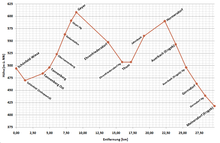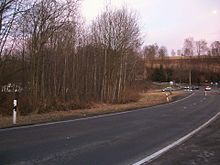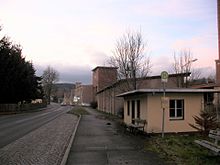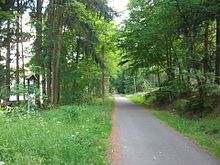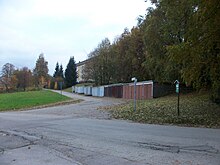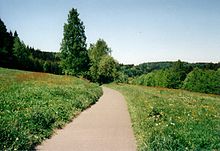Narrow-gauge railway Schönfeld-Wiesa-Meinersdorf
| Schönfeld-Wiesa-Meinersdorf | |||||||||||||||||||||||||||||||||||||||||||||||||||||||||||||||||||||||||||||||||||||||||||||||||||||||||||||||||||||||||||||||||||||||||||||||||
|---|---|---|---|---|---|---|---|---|---|---|---|---|---|---|---|---|---|---|---|---|---|---|---|---|---|---|---|---|---|---|---|---|---|---|---|---|---|---|---|---|---|---|---|---|---|---|---|---|---|---|---|---|---|---|---|---|---|---|---|---|---|---|---|---|---|---|---|---|---|---|---|---|---|---|---|---|---|---|---|---|---|---|---|---|---|---|---|---|---|---|---|---|---|---|---|---|---|---|---|---|---|---|---|---|---|---|---|---|---|---|---|---|---|---|---|---|---|---|---|---|---|---|---|---|---|---|---|---|---|---|---|---|---|---|---|---|---|---|---|---|---|---|---|---|---|
|
Excerpt from the route map of Saxony 1902
| |||||||||||||||||||||||||||||||||||||||||||||||||||||||||||||||||||||||||||||||||||||||||||||||||||||||||||||||||||||||||||||||||||||||||||||||||
| Route number : | 6971; sä. SM | ||||||||||||||||||||||||||||||||||||||||||||||||||||||||||||||||||||||||||||||||||||||||||||||||||||||||||||||||||||||||||||||||||||||||||||||||
| Route length: | 29.776 km | ||||||||||||||||||||||||||||||||||||||||||||||||||||||||||||||||||||||||||||||||||||||||||||||||||||||||||||||||||||||||||||||||||||||||||||||||
| Gauge : | 750 mm ( narrow gauge ) | ||||||||||||||||||||||||||||||||||||||||||||||||||||||||||||||||||||||||||||||||||||||||||||||||||||||||||||||||||||||||||||||||||||||||||||||||
| Maximum slope : | 34 ‰ | ||||||||||||||||||||||||||||||||||||||||||||||||||||||||||||||||||||||||||||||||||||||||||||||||||||||||||||||||||||||||||||||||||||||||||||||||
| Minimum radius : | 60 m | ||||||||||||||||||||||||||||||||||||||||||||||||||||||||||||||||||||||||||||||||||||||||||||||||||||||||||||||||||||||||||||||||||||||||||||||||
| Top speed: | 30 km / h | ||||||||||||||||||||||||||||||||||||||||||||||||||||||||||||||||||||||||||||||||||||||||||||||||||||||||||||||||||||||||||||||||||||||||||||||||
|
|||||||||||||||||||||||||||||||||||||||||||||||||||||||||||||||||||||||||||||||||||||||||||||||||||||||||||||||||||||||||||||||||||||||||||||||||
The narrow-gauge railway Schönfeld-Wiesa-Meinersdorf was a Saxon narrow-gauge railway in the central Ore Mountains . The almost 30 km long narrow-gauge railway served not only for business and excursion traffic, but above all for the paper and textile industry. The 750 mm track ran from Schönfeld via Geyer and Thum to Meinersdorf and was part of the so-called "Thumer Netz". The line was opened in three sections, in 1888 from Schönfeld to Geyer, in 1906 it was extended to Thum to the narrow-gauge railway Wilischthal – Thum and in 1911 the last section Thum – Meinersdorf followed. On the section of the Schönfeld – Thum paper mill, traffic was stopped in 1967 and between Thum and Meinersdorf in 1974/75. Only residual goods traffic up to the Schönfeld paper mill remained until 1985, after which the section was re-tracked to standard gauge. Traffic ceased here in the 1990s. A cycle path now partially runs along the route, and in 1976 Geyer erected the 99 534 locomotive and some wagons as a memorial.
history
Railway construction and opening
In the 1850s, the first plans for a rail connection from Chemnitz to Annaberg were made. Many cities and municipalities in the areas concerned wanted this route to go through their municipal area. In the end, the Chemnitz – Flöha – Annaberg line, opened in 1866, ran through the Zschopau valley, so the area around Thum and Geyer, like the Chemnitz – Adorf railway line opened in 1875, did not yet have a rail connection. It was not until the 1880s that more serious plans were made, but the Buchholz – Schwarzenberg line that was finally built did not affect Geyer either. Instead, in 1887 a decree decided to build a narrow-gauge railway from Schönfeld to Geyer, after a narrow-gauge railway from Wilischthal – Ehrenfriedersdorf with a branch to Thum had already been opened in 1886 . The preparatory work for the Schönfeld – Geyer line had been going on since 1885; the actual construction work began in December 1887. The Schönfeld – Geyer section was opened on December 1, 1888.
Shortly after the route opened, a connection from Geyer to Ehrenfriedersdorf was discussed. The construction was decided in 1898, but the construction work did not begin until 1904. At the same time as the Geyer – Thum connection in the course of the expansion, Thum also received a new train station, which in future would be the center of the route. The Herold – Ehrenfriedersdorf section was also obsolete, traffic on the section was discontinued on April 30, 1906 and the line was then dismantled. The extension to Thum went into operation on May 1, 1906, after the new Thum train station had been approached from Wilischthal since April 1906.
Also at the end of the 1880s there were plans for a connection from Thum to Meinersdorf, the project was decided in 1900 and work on this section of the line began in 1908. However, the construction work dragged on, so in 1909 not even 500 m of track were installed. On October 1, 1911, the section to Meinersdorf went into operation.
business
The line was one of the first narrow-gauge railways in Saxony, where rollbock operations were carried out. The first were bought by entrepreneurs with their own sidings in 1888, before the state railway later also procured roll stands at its own expense. After 1900 the trolleys were gradually replaced by reliable trolleys .
Traffic was also problematic in the snowy winters in the Ore Mountains, especially around Hormersdorf. Despite snow protection fences, trains got stuck several times and traffic was often out for days.
During the Second World War, numerous factories in larger industrial regions were bombed. As a result, many productions were relocated to more rural regions, so from 1944 onwards, armaments were produced in the textile factories in Auerbach, Hormersdorf and Thum, which were empty due to the war. Initially, aircraft fuselages were made for the Focke-Wulf Fw 190 , in the second half of 1944 production was switched to the Focke-Wulf Ta 152 fuselages . During the start of production, production was changed to the Messerschmitt Me 262 fuselage . Due to various problems, however, only a few pieces were produced and sent on the narrow-gauge railway. Despite the armaments production, the narrow-gauge railway survived the Second World War largely undamaged; the only major damage was a steam locomotive damaged by low-flying aircraft.
In the summer of 1974, rail replacement services were carried out on the Meinersdorf – Thum section for three weeks because television was making the opera film Fra Diavolo . For this purpose, two locomotives of the 99.51-60 series were moved to Thum and designed to match with several cars, and Jahnsbach was redecorated as Terracina .
Shutdown
The change of mode of transport was planned from 1965, the date was set in 1969. In particular, the still strong freight traffic should be relocated piece by piece to other standard-gauge stations by then. Due to the extremely poor condition of the superstructure, increasingly longer speed limits were set up in 1965/66. In 1967, for example, the trains needed about 90 minutes for the Schönfeld-Wiesa-Thum route, as only 10 km / h were allowed on a 9 km route. On August 15, 1967, the section from Schönfeld-Wiesa to Thum was closed. Only residual goods traffic between Schönfeld-Wiesa and the Schönfeld paper factory at km 1.45 continued. The route was dismantled in stages. In 1968, the track between the paper mill connection and the Tannenberg stop was dismantled in the course of a road widening, and Geyer was reached in 1970. From the summer of 1971 to October 5, 1972, the Geyer – Thum section was dismantled.
After the traffic on the Wilischthalbahn was ended in 1972, only the Meinersdorf – Thum line remained. But here too, the mode of transport should be changed very soon. Passenger traffic was stopped on September 29, 1974, while freight traffic was continued until December 31, 1975.
Due to the steep gradient from Schönfeld-Wiesa station to the Schönfeld paper factory, steam locomotives still had to be used, making train operations extremely uneconomical for the Deutsche Reichsbahn. Since the paper mill could not do without the railway connection, the remaining connection should be converted to standard gauge. However, this was only possible in 1985 when the paper mill stopped production for several months for renovation work. The last trips were made on April 15, 1985.
Route description
Operating points
Schönfeld-Wiesa ⊙
The station had four different names, in detail these were:
- until November 30, 1888: Schönfeld
- until December 23, 1904: Schönfeld train station
- until April 30, 1908: Schönfeld (Zschopautal) train station
- from May 1, 1908: Schönfeld-Wiesa
The station was opened in 1866 together with the line from Chemnitz to Annaberg . Initially insignificant, the station was extensively expanded with the narrow-gauge construction. The three platform tracks - two for standard gauge and one for narrow gauge - were supplemented in 1906 by another standard-gauge platform track, which was accompanied by an expansion of the railway facilities to the north. Although the station was completely in the municipality of Wiesa , it was initially named after the somewhat distant town of Schönfeld . It was not until the community of Wiesa tried to give it the double name Schönfeld-Wiesa.
After the line was closed in 1967 between the Schönfeld paper mill and Thum, residual goods traffic to the Schönfeld paper mill was maintained from here until April 15, 1985. After this remainder of the route was re-gauged in the summer of 1985, the connecting railway was operated until the early 1990s. In 2007 the station at the Zschopautalbahn was replaced by the nearby Wiesa stop.
Schönfeld (Zschopautal) ⊙
When the line opened in 1888, the halt did not have any buildings. In 1912 a free cession was built and a waiting hall at the end of the twenties. Until December 23, 1904, it was referred to as "Schönfeld (Zschopautal) Haltpunkt" and from 1908 as "Schönfeld (Zschopautal)". The station was located near today's bus stop “Schönfeld, Zschopautal” in a curve between “Annaberger Straße” and “Tannenberger Straße” in Schönfeld. There are no remains of her today. The railway embankment is overgrown with bushes.
Tannenberg East ⊙
An artificial silk processing plant with its own siding was built here in 1927. A construction track that was created in the process was converted into a non-public crossing point in 1928. From 1950 passenger traffic took place here, from 1951 the station was called Tannenberg Ost . In the last few years of operation, the crossing track was hardly used and in 1967 it was no longer available.
Tannenberg ⊙
The station was right next to the Zschopau, which was relocated to accommodate the stop. The waiting hall and the free pass were replaced in the 1920s by a service building with an attached goods shed. In addition to the continuous main track, there was only one crossing track on track systems.
Obertannenberg ⊙
The Obertannenberg stop was extremely spartan, it only consisted of a platform and a station sign. Due to the low usage it was closed in 1924, but later reopened for passenger traffic. Later a booth with a telephone was added. On the former train station restaurant opposite, the former lettering has been preserved.
Siebenhöfen ⊙
The Siebenhöfen stop was opened with the commissioning of the line to Geyer in 1888 without any buildings. The spinning mill opposite, also known as the Evans factory, had a branch track and a loading pit to load its products onto rail wagons. In the course of an extension of the platform in 1912/13, the stop was given a waiting hall and a free pass. The stop was closed in 1924 due to a lack of traffic, but reopened in 1929 as a stop on demand. The waiting hall was moved to the Geyer stop in the 1930s.
Geyer Hp ⊙
The stop was located directly in the city center than the higher-lying train station, but consisted of only one platform when the route opened. It was not until the 1930s that the stopping point received the waiting hall from Siebenhöfen. The breakpoint was closed between 1944 and 1949, the operation had already been supported by the city of Geyer because of the high costs. There are no more high-rise buildings at the “Altmarkt” / “Annaberger Straße” location. There is a parking lot on the site.
Geyer ⊙
The station was opened with the line commissioning in 1888 as a terminus, with a goods shed adjoining a reception building (with a hatch), a two-tier locomotive shed with a water station and water crane and a fire pit in front of the shed. There was also a farm building with free access.
With the extension of the line to Thum in 1906, the locomotive shed received an extension for a third track. An extension of the track system followed in 1915/16. After a fire in the goods shed (early twenties), the goods shed was rebuilt and a hatch was added. The station is a stop on the Saxony Steam Railway Route . The locomotive shed is still present at the location in "Bahnhofstrasse"; the reception building with goods shed was demolished in 2016. The ensemble is completed by a steam locomotive with wagons and a historic station sign.
Ehrenfriedersdorf ⊙
The Ehrenfriedersdorf station was the second station of Ehrenfriedersdorf. The first was located near Chemnitzer Straße until 1906 and was at the end of the branch line from Oberherold on the Wilischthal – Thum line . The new station had a large goods shed with an attached ramp, a reception building and a farm building. In addition to two platform tracks, the systems also included a weighbridge and a loading gauge. In the 1930s, a gantry crane was also built on the loading road. In addition to the two entry signals, some points were also remote-controlled. With the cessation of passenger traffic, the station became a freight station on August 16, 1967, before rail traffic was completely ceased on November 1, 1968. The station building can still be recognized today by its station clock. It is located on “Max-Wenzel-Straße” in the west of the town.
Ehrenfriedersdorf Hp ⊙
When the line from Geyer to Thum went into operation in 1906, in addition to the new train station, Ehrenfriedersdorf Hp was opened in the far north of the city. He owned a bus shelter and from 1912 a free pass. The stop was closed in 1924, but reopened as a demand stop in 1934. The car body was destroyed in 1967. At the former location on "Thumer Straße" near the federal highway 95 at the junction to Herold, remains of the foundations of the buildings can still be seen today. An information board reminds of the station. The route was converted into a cycle path.
Thum ⊙
The Thum train station was the operational center from May 1906 until its closure in 1975. A station building, ancillary building with free access, a wagon shed, a goods shed, a loading gauge, a track bridge scale and a side loading ramp with loading lane were built on the site. At the end of the platform in the direction of Geyer, there was a water crane between the tracks.
From 1906 to 1911 there was a two-tier locomotive shed with a water station, water crane and fire pit on the station grounds in Thum. In 1911 a third siding was added. In 1934 the old locomotive shed was torn down. In its place there was a locomotive shed with four double booths and a two-track shed for car repairs. It was the largest locomotive shed on the Saxon narrow-gauge railways . In October 2013 the building was demolished for the planned new construction of a nursing home on the site.
Jahnsbach ⊙
When the Thum – Meinersdorf line went into operation on October 1, 1911, the Jahnsbach station was also opened. The station, which was downgraded to the “Jahnsbach stop” in 1933, was given a waiting hall, an outbuilding with free access, a goods shed (three similar ones were in Hormersdorf, Auerbach and Gornsdorf) with an adjacent side loading ramp, two platforms, a loading gauge and a loading street. The station went out of service with the closure of the Thum – Meinersdorf section on January 1, 1976. The Jahnsbach stop is on the southern outskirts on "Geyerschen Straße". The wooden waiting hall, the toilet and the goods shed are faithfully preserved on site.
Hormersdorf ⊙
The Hormersdorf train station was on the territory of the neighboring community of Auerbach and about 1 kilometer outside the center of Hormersdorf. Initially, the station, which was opened as a stop, only consisted of the continuous main track, a loading track on both sides and a waiting hall. When it opened, the station also had an outbuilding with a free toilet and a car body as a goods shed. After an increase in traffic, the station was expanded in the 1930s, a crossing track, an additional loading track and a goods shed were created. Today only a notice board for the former narrow-gauge line reminds of the area that was newly built over. The embankment in front of and behind the train station can still be seen today.
Auerbach (Erzgeb) ⊙
The Auerbach (Erzgeb) station , which opened on October 1, 1911, was the largest stopover between Thum and Meinersdorf. In addition to a single-storey reception building with an extension, a goods shed with an adjoining ramp, a free exit was part of the structural facilities. Since the tracks were not sufficient for traffic, the station was expanded again at great expense in 1931/32. Auerbach was most important at the end of the Second World War, when numerous pre-assembled aircraft fuselages were loaded here. In the Auerbach (Erzgeb) train station, three pairs of trains crossed each day, and from 1972 two pairs of trains. At the location on “Bahnhofstrasse” in Auerbach, the reception building and the toilet are still preserved. The reception building is used by the German Red Cross.
Auerbach (Erzgeb) Hp ⊙
The Auerbach (Erzgeb) stop, which was already in place when the company opened, was only spartanly equipped with a platform, a waiting hall and an entrance. Like numerous other stops, it was closed in 1924. The refurbishment took place in 1932. The area on "Gornsdorfer Straße" at the exit to Gornsdorf is now covered with garages.
Gornsdorf ⊙
The Gornsdorf train station , which opened on October 1, 1911 , has been the Gornsdorf stop since 1933 - was built with a waiting hall, free access, goods shed with an adjacent side loading ramp and a loading street. There was also an ash pit behind the waiting hall and free pass. The station went out of service on January 1, 1976. The goods shed still exists on the grounds on "Bahnhofstrasse", which are now used industrially.
Gornsdorf Hp ⊙
The Gornsdorf stop, which opened in 1911, consisted of only a platform and a wooden waiting hall (similar to that of the Geyer stop), and a year after the line opened, a free pass was added. In the absence of travelers, the station was closed in 1924 and the waiting hall was demolished in the 1940s. The stop was reopened in 1950, there was also a waiting hall, but it was moved to another location in 1960, and since then the free pass has been the only building again. The Gornsdorf stop is located on "Freiligrathstraße" in the north of Gornsdorf. Today the area is built over with garages.
Meinersdorf (Erzgeb) ⊙
The station on the Chemnitz – Adorf railway was opened in 1880, but only gained greater importance with the construction of the narrow-gauge railway. In addition to the transition to the narrow-gauge railway, several users of the standard-gauge railway also had an enormous volume of goods, so that the station was constantly overloaded until the turn of 1989/90. Meinersdorf has only been a stopping point since 1999. The former station building was demolished in 2018.
Vehicle use

The vehicles on the line corresponded to the general principles of the vehicles procured for the Saxon narrow-gauge railways. Locomotives and wagons were therefore freely exchanged for other narrow-gauge railways as required. Initially all vehicles had the lever brake , from 1922 vehicles were also equipped with the Körting suction air brake. The conversion of the locomotive and wagon fleet was slow, so the conversion of the majority of the passenger cars to the new brake lasted until 1939. Initially, only the central buffer coupling was used for coupling, while almost all vehicles were equipped with the Scharfenberg coupling when operations were stopped.
Locomotives
For the route Schönfeld – Geyer, the locomotives with the numbers 28, 29 and 30 of the type Sächsische IK were put into service.
After 1891, the new III K should dominate the service on the Schönfeld – Geyer and Wolkenstein – Jöhstadt routes . In 1891 the locomotive no. 43 of this type came brand new to Geyer.
As early as 1896, however, the stronger and more maintenance-friendly vehicle type IV K was used. However, these locomotives had the disadvantage that they quickly pulled snow between the engine frames in winter and thus got stuck.
From 1906 the direction of travel of the locomotives was changed, so that, for example, they drove down the valley between Geyer and Schönfeld with the chimney first.
After the superstructure and the bridges were strengthened in 1924/25, the first superheated steam locomotives of type VI K came to Thum with 99 684 and 99 688 . Locomotive 99 684 completed its test run on November 2, 1925 between Schönfeld and Thum. It was followed by other machines of the same series, so that the Thum and Geyer locomotive stations in 1925 had 9, and in 1928 even 13 copies (one of which was in Meinersdorf). Between 1934 and 1937, locomotives of the VK class came to Thum with the numbers 99 612, 99 614, 99 615, 99 616 and 99 618 .
In the summer of 1933, the 99 751 and 99 752 were the first 1'E1 'standard locomotives of the DR class 99.73-76 to Thum. With the numbers 99 757 to 99 762, six more locomotives of this type were added to the Thumer Netz. On June 20, 1953, the Thum depot received the 99 778, the first new locomotive of the DR class 99.77-79 . The 99 777 followed a day later. The 99 776 and the 99 779 to 99 793 also made their start-up on the lines of the Thumer network. Except for the specimens 99 772, 99 786, 99 788, 99 790 and 99 794, all other new locomotives ran on the Thumer network.
dare
All of the cars that were present when the line opened in 1888 were two-axle vehicles. Four-axle wagons came on the line at the latest after the opening of the section from Geyer to Thum, because the first four-axle vehicles were running on the Wilischthal – Thum line shortly after the opening. Before 1910, four-axle passenger coaches were stationed on the route on a larger scale, so that the two-axle passenger coaches soon became superfluous. In contrast, the two-axle vehicles were still in use in freight transport until at least the end of the 1920s, as it was not until 1935 that there were no more two-axle wagons in the inventory. The only exception later was a two-axle baggage car, which was not retired until after the Second World War.
The route today
After the political change in 1990, cycle paths were set up on sections of the former railway line. So between Tannenberg and Geyer, between Ehrenfriedersdorf and Thum ( paved ), between Thum and Auerbach and in parts of the Gornsdorf area. The interest group Schmalspurbahn Thumer Netz eV has set up memorial boards at the former stations and other evidence of the route.
literature
- Dieter Bäzold: The Thumer Narrow Gauge Network . Bufe-Fachbuch-Verlag, Egglham 1993, ISBN 3-922138-51-9 .
- Stephan Häupel, Eberhard Schramm: Narrow gauge railways around Thum. Kenning publishing house 2002, ISBN 3-933613-39-6 .
Web links
- Photo series of the former railway line on stillosed.de
Individual evidence
- ↑ Stephan Häupel, Eberhard Schramm: Narrow gauge railways around Thum , p. 10 ff.
- ↑ Stephan Häupel, Eberhard Schramm: Narrow gauge railways around Thum , p. 14 f.
- ↑ Stephan Häupel, Eberhard Schramm: Narrow gauge railways around Thum , p. 15 ff.
- ↑ Stephan Häupel, Eberhard Schramm: Schmalspurbahnen um Thum , p. 39 ff.
- ↑ Dieter Bäzold: Das Thumer Schmalspurnetz , p. 20
- ↑ Stephan Häupel, Eberhard Schramm: Narrow gauge railways around Thum , p. 39.
- ↑ Stephan Häupel, Eberhard Schramm: Schmalspurbahnen um Thum , p. 172 ff.
- ↑ Stephan Häupel, Eberhard Schramm: Schmalspurbahnen um Thum , p. 178 ff.
- ↑ Stephan Häupel, Eberhard Schramm: Narrow gauge railways around Thum , p. 81 ff.
- ↑ Stephan Häupel, Eberhard Schramm: Narrow gauge railways around Thum , p. 87
- ↑ Stephan Häupel, Eberhard Schramm: Narrow gauge railways around Thum , p. 92 ff.
- ↑ Dieter Bäzold: Das Thumer Schmalspurnetz , p. 29
- ↑ Stephan Häupel, Eberhard Schramm: Schmalspurbahnen um Thum , p. 94 ff.
- ↑ Stephan Häupel, Eberhard Schramm: Narrow gauge railways around Thum , p. 97
- ↑ The Evans factory on the website of the Geyer – Tannenberg culture mile
- ↑ Stephan Häupel, Eberhard Schramm: Narrow gauge railways around Thum , p. 99
- ↑ Stephan Häupel, Eberhard Schramm: Narrow gauge railways around Thum , p. 100
- ^ The Geyer stop on www.sachsenschiene.net
- ↑ Stephan Häupel, Eberhard Schramm: Schmalspurbahnen um Thum , p. 110 ff.
- ↑ Freie Presse Online : Investment - Locomotive shed will be demolished for the DRK , accessed on February 17, 2014
- ↑ The Jahnsbach stop on www.sachsenschiene.net
- ↑ Stephan Häupel, Eberhard Schramm: Schmalspurbahnen um Thum , p. 128
- ↑ Stephan Häupel, Eberhard Schramm: Narrow gauge railways around Thum , p. 130 f.
- ↑ Stephan Häupel, Eberhard Schramm: Narrow gauge railways around Thum , p. 132
- ↑ Stephan Häupel, Eberhard Schramm: Narrow gauge railways around Thum , p. 136
- ↑ Stephan Häupel, Eberhard Schramm: Narrow gauge railways around Thum , p. 161
- ↑ Stephan Häupel, Eberhard Schramm: Narrow gauge railways around Thum , p. 160 ff.
- ↑ Railroad Cycle - Railroad Cycle Paths in Saxony , accessed on April 11, 2010.
- ↑ IG Thumer Netz website

